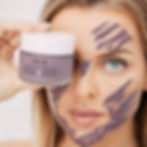Hyaluronidase

Hyaluronidase is a naturally occurring enzyme that’s used to break down hyaluronic acid–based fillers, including Luminera, Juvéderm, Restylane, and Belotero.
The dermal filler (also known as hyaluronan or HA) that’s the key ingredient in many dermal fillers is a polysaccharide that occurs naturally in the body. In skin,
it resides in the extracellular matrix, alongside collagen, elastin, and connective tissue, to provide plumpness and structure—the very qualities you may desire when pursuing filler. However, if you’re unhappy with your HA filler results or are experiencing complications, the use of hyaluronidase can resolve the situation.
Left alone, an HA filler is eventually broken down by your body’s own enzymes, but that process can take months or even years, depending on your metabolism, the type of filler used, and where it’s placed (fillers that were injected under the muscle or in areas without a lot of movement tend to last longer).
Hyaluronidase enables you to dramatically accelerate the breakdown process.
What does Hyaluronidase do?
Typically, providers turn to hyaluronidase to reverse the results of filler injection results gone awry: overfilled lips or cheeks; the Tyndall effect (a blue cast in the tear troughs); lumps under the skin (aka granulomas or nodules); an uneven or asymmetrical result; or swelling around the eyes.
In very rare cases, it’s used to immediately reverse a serious complication of hyaluronic acid filler injections, such as an arterial blockage or blood clot behind the eye. If filler is accidentally injected into a blood vessel or presses against it, a complication called vascular occlusion, “this can cause pain and skin discoloration—either a bluish or pale-white tint—plus swelling and skin breakdown,”
PRICE
BOTOX - One Area
HYALRUNIDASE
Hyaluronidase is a naturally occurring enzyme that's used to break down hyaluronic acid – based fillers, including Juvéderm, Restylane, and Belotero.
£ 400
HOW LONG DOES IT TAKE HYALURONIDASE TO WORK ?
It takes two the three days for hyaluronidase to break down filler, with most of the action happening within the first 24 hours. Over the next couple weeks, your body will continue to resorb the remaining hyaluronic acid molecules, after which you’ll see your final results.
For some patients, one round of injections is sufficient. For others, several rounds may be needed. A patient’s own body chemistry can impact the efficacy of or the speed at which the enzyme works.
I like to wait several days between subsequent hyaluronidase injections, to give the swelling time to go down and so we can better see the result before deciding if we need more hyaluronidase. I tell my patients it’s a process that is hard to predict in advance.
WHAT ARE THE RISKS AND POTENTIAL SIDE EFFECTS OS HYALURONIDASE ?
As with any injection, you do run the risk of bruising at the injection site. Most patients will also have some slight swelling. Some less common but still possible hyaluronidase side effects include redness, tenderness, or an itchy sensation at the injection site.
Before going forward with your treatment, talk to your Specialist about any medications you’re taking, since reactions between hyaluronidase and certain medications (including antihistamines, anxiety medication, and aspirin) can result in dangerous side effects.
HOW TO PREPARE FOR THE TREATMENT?
The treatment does not require any preparation - we preferentially visit the doctor without makeup (or wash it off immediately before the visit), and the doctor disinfects the area where the enzyme is to be administered, immediately before the injection.
Time of treatment: 30-60 minutes
Series: 1-2 times (depending on the needs)
Area: all body

INDICATIONS:
-
impending necrosis of the skin and subcutaneous tissue
-
blurred vision
-
a sudden allergic reaction
-
abscess formation due to the presence of hyaluronic acid
-
the formation of a biofilm
-
the occurrence of granulomas
-
asymmetry
-
unsatisfactory aesthetic effect, including showing through the skin of a too shallow preparation
-
lumps
-
displacement of acid
CONTRAINDICATIONS:
-
enzyme allergies
-
unrealistic expectations as to the results that can be obtained
-
poorly controlled chronic diseases (such as high blood pressure)
-
period of exacerbation of autoimmune diseases
-
pregnancy and breastfeeding
-
active infections, both systemic and local (at the site of the planned treatment)
-
active neoplastic disease
-
Allergic reaction of people allergic to Hymenoptera venom
RECOMMENDATIONS AFTER THE TREATMENT
-
Pay special attention to the rules of hygiene - do not touch the post-treatment areas, gently rinse with water, dry with a disposable towel
-
For at least 7 days after the treatment, you should avoid the sauna, swimming pool, solarium, jacuzzi, long hot baths, cryo-chamber, winter sports
THE FACTS
Who is performing the treatment?
The procedure is performed by a suitably qualified person.
Is the procedure painful?
The procedure is almost painless and performed
under local anesthesia. During the procedure
The patient feels only slight punctures.
How long does convalescence take?
The treatment does not require a recovery period,
right after it, the patient may return
for everyday activities.
BEFORE AFTER

All Products
Galeria
SKIN MEDICINE AESTHETICS TRAINING ACADEMY LTD












































